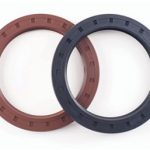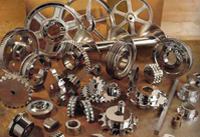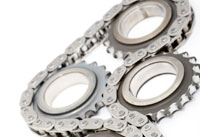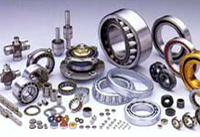
Image Via: Timken
There are a variety of oil seals used in a variety of applications to help close the space between a stationary and a moving part. By closing the space it prevents any lubricants from escaping. Additionally, oil seals help create a seal that prevents any contaminants from entering machinery which can cause a host of problems. Mechanical equipment and machinery require different size or type oil seals to ensure that there is a superior and precise seal. Because oil seals help reduce contamination or mixing of materials it prolongs the life of machinery and helps ensure a more reliable performance.
There are a wide variety of industrial applications and therefore there are a wide variety of oil seals to meet the specific application needs. By choosing the right oil seal you will have a better fit, improved stability, and enhanced reliability. Rubber tends to be one of the most commonly used oil seal materials. SKF, an oil seal manufacturer, explains how oil seals for and the importance of proper installation, “To provide effective sealing, radial shaft seals must be installed properly. An experienced installer with suitable tools, working in a clean environment, is recommended to provide proper installation. The shaft counterface surface and housing bore should meet the demands specified in the sections Shaft requirements and Housing bore requirements. To facilitate seal installation and to achieve initial lubrication, prior to installation, SKF recommends wiping the shaft and seal with the lubricant that is going to be retained. While the outside diameter of metal-cased seals can be lightly lubricated to ease installation, the outside diameter of rubber covered seals should always be lubricated.
Seals with an auxiliary, contacting lip can also be filled with grease between the sealing lip and auxiliary lip to reduce frictional moment. This does not apply to silicone rubber seals and seals with hydrodynamic features, other than SKF WAVE lip designs. SKF also recommends using a hydraulic press, with suitable tools, to install a seal in its housing bore. Pressure should be applied as close as possible to the outside diameter of the seal.” Oil seals are commonly used in a variety of industries. Below are 5 types of oil seals used in today’s manufacturing and machinery industry.
5 Types of Oil Seals
- Automotive
- Industrial
- Mechanical
- Oil & Grease
- Shaft


















